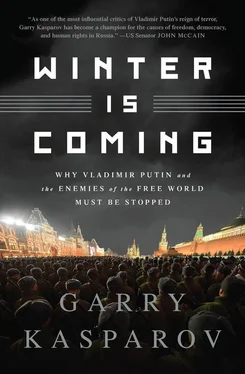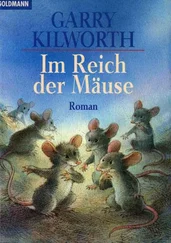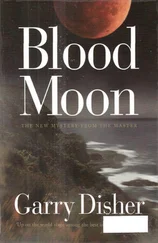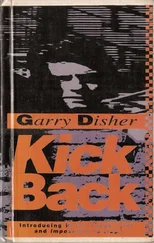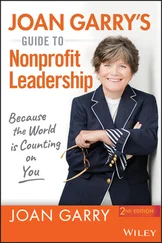An earlier incident around that 1990 match, my fifth match in a row against Karpov and split between Lyon and New York, revolved around which flag was going to appear next to my name during the games, the Soviet hammer and sickle or the revived prerevolutionary Russian tricolor. This may sound incredibly trivial, I admit. But to me, and to a Soviet culture obsessed with symbols, politics, and chess, it was a big deal. The Soviet Union would still exist for well over a year and the match organizers in New York were very worried about politicizing the event or upsetting the Soviet authorities. After all, this wasn’t a Rocky movie with an American underdog; it was two Russians. (As Americans in particular tended to call all Soviets, however inaccurate it often was. American world champion Bobby Fischer once boasted he was going to “beat all the Russians” at a tournament, when in fact his opponents were Estonian, Latvian, and Armenian!)
Of course politicizing the match was what I wanted and I stuck to my demand and got my wish, for a while. After four games, both flags were removed from the table due to protests from the Soviet delegation. I switched to wearing a prominent Russian-flag pin for the rest of the match. As much as I loved chess and as much as chess had done for me, I had always known that there were more important things in life. I was lucky that my “disloyalty” to the chess goddess Caissa rarely cost me as dearly at the chessboard as it might have. Despite the trauma of Baku and the distractions of Russian politics taking up so much of the time I should have been preparing for Karpov, I managed to edge out another world championship victory. And I did it representing to the white, blue, and red flag of democracy and rebellion.
Even the Western critics who admit Gorbachev never desired the end of Communism or the USSR give him credit for “not sending in the tanks” as the Iron Curtain unraveled and the Soviet republics spun off from Moscow like water off a top. I will deny Gorbachev even this small point of honor, however. First off, he did use military force in several places, especially the Baltics. Yes, he could have ordered Soviet troops to shut down elections, arrest opposition leaders, and fire on protestors. But would they have listened? Even had some of them obeyed Moscow’s orders and massacred thousands, it would have sealed Gorbachev’s own violent end—and he was nothing if not a survivor.
It also would have been foolish for Gorbachev to take risky military action in Hungary or Czechoslovakia when he had to worry about stability in the USSR. When your own house is on fire you don’t send the firefighters to your neighbor’s house. Food shortages and political independence movements were flaring up all over. Gorbachev didn’t send in the tanks to try to keep the USSR together by force because he knew it was too late and he knew it would mean his own neck. And by mid-1991, when things were completely unravelling, he had seen the backlash after Soviet forces killed dozens and injured hundreds at a Vilnius TV and radio station in January 1991, after the Lithuanians refused to back down from their declaration of independence (issued in March 1990, the first of the Soviet republics). Yeltsin, by then the president of the Russian Federation, immediately denounced the violence and called for the withdrawal of all Soviet troops from the Baltics. Foreign leaders also condemned the crackdown and Gorbachev knew he could lose Western sympathy and the billions in aid he needed to have any hope of keeping hold of power.
The Soviet Union was already without members when it formally dissolved on December 25, 1991. (A date that has no particular resonance in Russia, where Christmas is celebrated on the Orthodox date of January 7, if at all.) Russian president Boris Yeltsin had succeeded in steadily ripping power away from Gorbachev and transferring command and control to the Russian Republic. The three Baltic nations, Armenia, and Georgia had long since declared independence and had been admitted to the United Nations. The failed coup of August 19-21 opened the floodgates for the rest.
Gorbachev’s hope to form a new union was falling apart when news came that hardliners in his government had declared a state emergency to prevent the August 20 signing of the New Union Treaty that would have officially transformed the USSR into a federation of independent republics. During the coup, Gorbachev was supposedly held incommunicado at his dacha in Crimea, but it is my belief that the coup was of his own devising, or at least that he was a willing participant. Instead of seeing his authority continue to dwindle, Gorbachev might have hoped he would be able to return to a strengthened position after “negotiating” with the hardliners after they had done the dirty work of cracking down on political opponents like Yeltsin. As I recounted at the start, there was no popular or military support for the coup and it fell apart in seventy-two hours. After that debacle, even the Central Asian republics that had been eager to join the new union quickly followed Ukraine and Belarus out the door and declared their independence. Mother Russia herself declared on December 12.
The good news for Gorbachev was that the West spent a long time in denial over what should have been considered fantastic news. After my disappointing experiences discussing my homeland with American experts, it came as no surprise that President Bush often sounded more alarmed than overjoyed by the prospect of the Soviet Union falling to pieces. The empire was evil, yes, but it was the evil he and everyone in his administration knew very well. Bush also felt he could rely on Gorbachev, although he was a man backed by the KGB and who had never been elected to anything, over the unknown quantity of the populist and popularly elected Boris Yeltsin.
There was more than rhetoric involved in these bizarre attempts to prop up an old foe. Billions of dollars in Western aid and loan guarantees were provided to keep the USSR on life support. Germany alone extended an $8 billion aid package that was part of the agreement on German unification. Germany’s financial commitments to Russia would balloon to $45 billion by 1992 and they included money for sending Russian troops home and even building housing for them in Russia.
The United States also stepped in with assistance well before any outcome was clear on democratic reforms in Moscow. On December 12, 1990, President Bush announced a package worth over $1.3 billion in credit and credit guarantees and waived the 1974 Jackson-Vanik amendment that put strict controls on doing business with the USSR. Four months later, Bush authorized another $1.5 billion in agricultural loan guarantees. The United States also sent medical aid directly to the Baltic States after the Soviet crackdowns there, and to Ukraine for the victims of the Chernobyl nuclear catastrophe.
American and other G7 multilateral aid and credit to Russia and other Soviet states only increased over the next few years, with Russia by far the largest beneficiary. In March 1993, feeling the need to support Boris Yeltsin’s government, which was under parliamentary pressure, the G7 put together a $43 billion assistance plan. Japan bowed to the pressure of its fellow G7 members and did not tie its nearly $2 billion in aid to the disputed Kuril Islands. The IMF and the World Bank also opened their wallets, with the World Bank making its largest project loan ever of $610 million to help rebuild Russia’s oil industry. Russia failed to collect all of the offered aid due to failing to achieve some required economic reform requirements. Thankfully, it was too little and far too late to keep the USSR together.
Separately, during the 1990s billions of dollars came in to secure the Soviet nuclear weapons and related programs in Russia, Ukraine, Belarus, and Kazakhstan. This can hardly be called anything but a wise investment, since the last things anyone wanted to see was a lack of oversight of nuclear weapons and materials or a diaspora of Soviet nuclear scientists in need of employment.
Читать дальше
